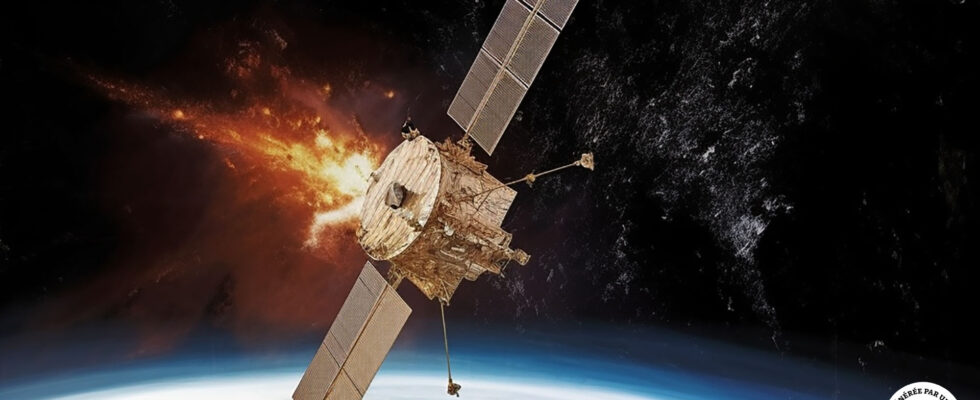This is the epilogue of the career of the Aeolus satellite. In the coming months, it will approach Earth, to burn up in the atmosphere.
It was to be operational for three years before being destroyed. Finally, the small Aeolus satellite will have benefited from an extended longevity. Launched in 2018, it lasted 18 months longer than its original lifespan, giving scientists the opportunity to collect more data. But today is the end: Aeolus will disintegrate in the atmosphere.
A fall under control
This was reported by the European Space Agency (ESA) in a May 8 update. In the coming weeks and months, Aeolus will see its altitude gradually decrease, going from 320 km to 280 km, then to 150 km and finally to 80 km. This is when the atmosphere, which has become relatively dense again, will do its work and disintegrate the satellite.
The first phase of the descent will be done naturally, without intervention from the control center. It is from 280 km that the operators will take control of the machine to bring it to the desired altitudes. The speed of the craft around the Earth – necessarily high to maintain orbit – will cause significant friction with the air, which will consume Aeolus.
In principle, Aeolus – whose mission was to measure the speed of winds around the Earth, up to 30 km altitude – will be completely vaporized by the end of August 2023. But if things ever do not go well, ESA has planned a trajectory that will direct the course of the satellite towards an oceanic zone. A safety choice, so as not to expose inhabited areas.
The risks are minimal for people. 71% of the earth’s surface is covered by oceans. As for the populated regions, they are relatively small compared to the totality of the emerged lands. Finally, the atmospheric re-entry of Aeolus is done under the supervision of ESA, which will be able to control most of the descent of the machine.
Aeolus might have run a bit longer. The end of operations was recorded on April 30. Solar activity is partly in question: the eruptions of recent times have had the effect of increasing the density of the atmosphere, underlines the ESA. Doing so had the effect of increasing the satellite’s fuel consumption, as there was greater air resistance.
However, it is a success to have been able to extend its activity for a year and a half. This, especially since Aeolus’ career could have ended much earlier. It must be remembered that the meteorological machine was almost hit by a SpaceX satellite. Blame it on a bug, according to the American company. Fortunately, the collision was avoided in time thanks to an evasive maneuver.
If you liked this article, you will like the following ones: do not miss them by subscribing to Numerama on Google News.
